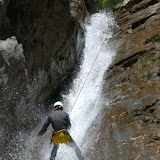Dharan has a tropical monsoon climate with maximum temperature of 35 to 36 Degree Celsius in April, and minimum of 10 to 12 Degree Celsius in January. The maximum rainfall is about 460mm which is usually seen in August. Nepal's one of the largest river, Saptakoshi, runs near Dharan.
What is Dharan known for? It is known for having B. P. Koirala Institute of Health and Science, over 25 Temples and holy sites, making it an important pilgrimage destination, and Dharan is the gateway to Nepal's popular tea growing region `Dhankuta'. It is also known as environmentally friendly city, and a land of friendly hill people.
Places to Visit and Things to do in Dharan:
Sightseeing : Temples : Dharan is one of the holy places of Nepal. It has numerous temples; Pindeshwar temple, Dantakali temple, Pancha Kanyan temple, and Buddha Subba temple. Many Hindu pilgrims visit holi temples located in this region as well as those located in other parts of Makwanpur District of Nepal
Drink Tongba : In Dharan and also in north of Dharan, find a special Limbu culture of drink known as Tongba, which is another name for Limbu's homemade wine. Fermented millet seeds are put in a wooden or plastic mug which is filled with hot water. One sips through a bamboo straw as more hot water is added which makes Tongba go down easily and has more influence. Many consume this drink during winter season, and is also a favorite drink of the domestic tourists in the region.
Sightseeing : Bhedetar - Mountain Views : Bhedetar is located 9 Kilometer away from Dharan. When the sky is clear (especially during Autumn season), one can witness magnificent views of the Himalayan range, and enjoy fresh Himalayan breeze.
Sightseeing : Pakhri Bash : Small hill village which had the British base camp built to Recruit Gurkha Army. Some British monuments can be found here.
Dhankuta / Hile - Tea Gardens and Bazaar : From Dharan, about 50 Kilometers of what is the most scenic drive in Nepal takes you to a place where your imagination of greenery gardens are revealed. Some say, come to Dhankuta, if you want to walk in the clouds. Meet the clouds, village folks, and greet the awesome enchanting tea gardens here, and learn some on organic tea and tea processing units in Nepal. If you are a tea lover, you will enjoy visiting a privately owned tea garden and factory named Guranse. Also visit Hile, a hill town situated at 1850 meter altitude, which is just 6 Kilometer from Dhankuta for the Hile Bazaar and gracious people.
Hiking : Basantapur : This hill is located about 90 KM from Dharan, and about 1 KM from Hile. It is the starting point for trekking to Kanchanjunga base camp. Beyond the hill, beautiful forests Rhododendrons (Guranse in Nepali) can be seen. Guranse is the Nepal's national flower.
Hiking : Raja Rani Hill : Excellent spot to view Kanchenjunga, Khumbakarna, Makalu and Mt. Everest. The hill is located 20 Kilometer from Dharan

